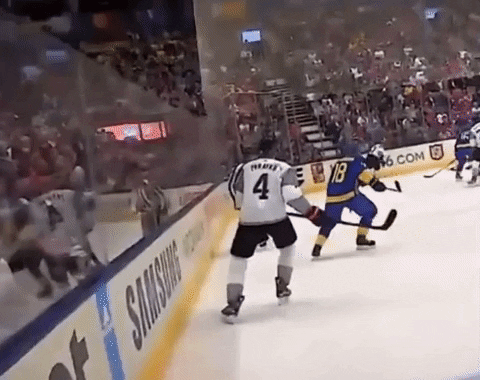Last time we looked at whether players should support the play by being close or far.
This time around we are going to dive further down the rabbit hole and into effective puck support tactics.
This is part 2 of a 3 part series:
Part 2 - OZ Puck Support: Strong vs Weak-Side
Weak-Side Support
Most top players that move up the pyramid are puck hounds. They go and get the puck since they are superior players. Many of their puck touches come off stealing the puck or getting the loose puck.
While effective at the lower levels, as players move up the pyramid there is a patience that is required as stolen or loose pucks become less frequent. Players are better at puck protection, control, and are better athletes.
Patience to allow the puck to come to you is important. Having multiple ways that the puck can be acquired is extremely valuable.
When playing weak side puck support (or high player), the key is to stay wide or get wide. The ultimate goal is to stretch the area the defense must cover. From there, shuffling or micro-movements should be used to find and keep passing lanes open.
Patience away from the puck and simply shuffling to find and keep an open passing lane:
This is something we showcased during our first ever newsletter post, “Better practices made easy.” We played a 3v2 back-side themed game in the video.
Strong-Side Support
If you’re on the strong side (side of the ice that the puck is on), it’s best to go toward the puck. There are a million examples as to why if you’re already strong side that you should stay and work with your teammates rather than go away from them.
To simplify, if you move away you’re simply putting more defenders between you and your teammate. While you’re also inviting more pressure on the puck and creating very limited options for the puck carrier.
Rather we would like to players use small area support to set screens, picks, create sorts, etc. To give options for your puck-carrying teammate to work off of you.
An example of a moving pick from AM34:
Ice view:
Another example is from one of our favorite players, William Eklund (Link to our report on his elite small area skills):
It’s not just picks. We can see a scissor movement create a sorting moment (a.k.a. “creating a sort”). This is when the defenders must communicate and understand what their assignment/check is.
Here, both defensive players end up covering the player skating up the wall:
Summary
In summary,
Strong side = stay close, work together
Weak side = stay far, be patient
Further reading - Details that Auston Matthews has added into his defensive game
Did you enjoy this newsletter?
Help us spread the ideas within and share it with the people you care about






